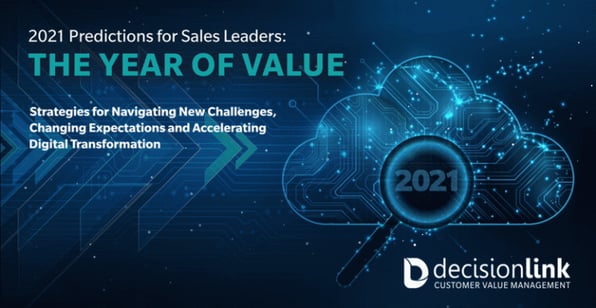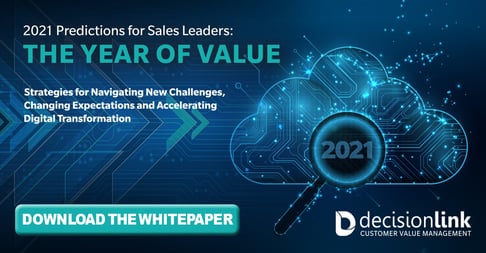The Increased Focus on Value Management – and ROI – by Leading CROs in 2021

Since the early 2000s, there has been an interesting trend, especially in the technology industry, to install a Chief Revenue Office instead of a CSO. It started off as a large, but by no means exclusively, Silicon Valley trend and focused on SaaS providers. Most SaaS start-ups were led by CEOs with product and engineering backgrounds and many of them quickly realized (or were advised so by their investors) that they needed further executive leadership with revenue and customer DNA to complement those skills and interests — but more than just a sales leader because SaaS success is about more than just an initial sale – it is about an ongoing relationship with your customer over time.
So, while all CROs have a purview over sales, many also oversee customer success, overseeing the full lifecycle of a customer. A small number even manage the marketing function, too. Some CROs act more like a COO, getting involved in product, business operations, finance, sales operations, business development processes.
Why is this? Well, ultimately, the CRO’s purpose is to align and optimize the entire customer experience with the aim of increasing revenue and many have discovered that the customer experience is often broken during the operational business processes – a badly-toned dunning letter, poor delivery management, whatever.
If anything, this last year has dramatically amplified the CRO’s contribution to their organization. Most vendors and SaaS providers have learned that managing and maintaining a long-term customer relationship is more valuable to their business than a pure growth strategy. And the CRO’s role, looking at ways to generate and retain revenue across multiple channels with a long-term perspective, rather than the short-term horizon usually embraced by sales departments, has become mission-critical.
So, with COVID-19, the shift to virtual sales motions, and the growth of the SaaS economy, where contracts are up for renewal every year or two, forward-thinking CROs are promoting Customer Lifetime Value as a critical component for growth and success. These CROs are helping their businesses to create new differentiation based upon value achieved from using a solution, which in turn increases margins, improves customer experiences, and creates long-term stickiness.
They are also stressing the importance of tracking, measuring, and communicating customer value. One benefit of an “as-a-service” offering is that the value can be monitored continually as usage and deployment of the service fluctuate over time. ROI is no longer a one-off forecast based upon estimates and assumptions, it can be modeled tracked over time in a system, enabling customer success teams to track economic impact on an ongoing basis.
In our 2021 Predictions for Sales Leaders: THE YEAR OF VALUE whitepaper, we share 5 predictions for sales leaders in the coming year. One of which, is that CROs will begin to track a new KPI called “Return on Value Management,” a measure of how a company’s value selling efforts impact the business over time, including improvements in the number of business cases, developed, pipeline generated, close rate improvement, revenue growth, and EPS and cash.
In the coming year, the leading CROs will be able to easily articulate to both company leadership and their Board of Directors the economic impact of their investments in all customer-facing activities, and with it, establish themselves as true partners and trusted advisors to their customers, by ensuring conversations across the organization – in marketing, sales and customer success – are consistent and rooted in value delivery.

 ValueCloud
ValueCloud
.png?width=118&height=76&name=Rectangle%20(3).png) ValueCloud Ignite
ValueCloud Ignite
.png?width=92&height=92&name=Rectangle%20(4).png) Free Assessment
Free Assessment
.png?width=100&height=100&name=Rectangle%20(5).png) Watch a Demo
Watch a Demo
.png?width=82&height=96&name=Rectangle%20(6).png) Value Calculator
Value Calculator

.png?width=62&height=51&name=Group%2010%20(1).png) Marketing
Marketing
 Sales
Sales
 Customer Success
Customer Success
 Engage Prospects
Engage Prospects
 Win Deals Faster
Win Deals Faster
 Retain Customers
Retain Customers
.png?width=62&height=62&name=Rectangle%20(8).png) Adopt and Scale
Adopt and Scale
.png?width=54&height=54&name=Rectangle%20(9).png) Cybersecurity
Cybersecurity
 Healthcare
Healthcare
.png?width=54&height=54&name=Rectangle%20(10).png) IT & Software
IT & Software




